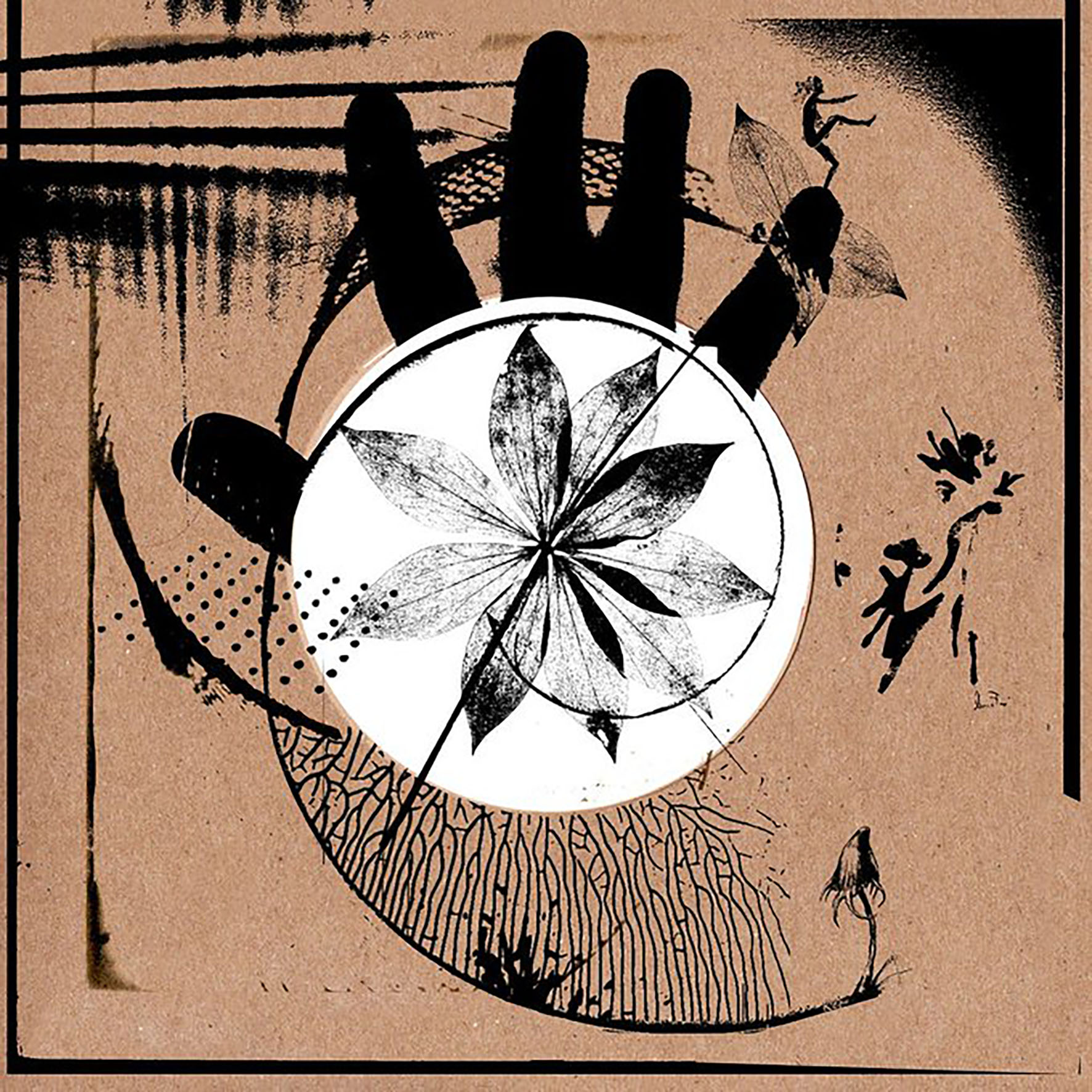 There are a number of fascinating small labels exploring unusual niches these days, which I suppose makes the current era something of a golden age for curious outsiders with deeply arcane interests. My favorite imprint in that vein is unsurprisingly the "open-ended research project exploring the vernacular arcana of Great Britain and beyond" that is Folklore Tapes, as their major releases exist on a plane all their own, elegantly and entertainingly blurring the lines between art, history, folklore, scholarship, music, poetry, visual art and whatever other compelling threads catch their fancy. This latest opus is characteristically another glorious cultural artifact, which is hardly surprising given the fertile nature of the subject. Nevertheless, the label have still outdone themselves, as Swifter than the Moon's Sphere celebrates the hidden history of fairy folk with an eclectic array of fairy-inspired spoken word pieces and sound art, as well as a deep and endearingly witty scholarly dive into fairy class structure and how shifting views of the supernatural mirror our society. In fact, this is one of the rare albums in which the liner notes (courtesy of Jez Winship) are every bit as compelling as the actual music ("there is something oddly impotent about the fairy aristocracy"). Beyond that, Swifter than the Moon's Sphere is a welcome return to familiar territory for the label, bringing together an inspired host of known, unknown, obscure, and enigmatic artists for a freewheeling tour de force of supernaturally charged and backwards-looking folk horror and rural psychedelia.
There are a number of fascinating small labels exploring unusual niches these days, which I suppose makes the current era something of a golden age for curious outsiders with deeply arcane interests. My favorite imprint in that vein is unsurprisingly the "open-ended research project exploring the vernacular arcana of Great Britain and beyond" that is Folklore Tapes, as their major releases exist on a plane all their own, elegantly and entertainingly blurring the lines between art, history, folklore, scholarship, music, poetry, visual art and whatever other compelling threads catch their fancy. This latest opus is characteristically another glorious cultural artifact, which is hardly surprising given the fertile nature of the subject. Nevertheless, the label have still outdone themselves, as Swifter than the Moon's Sphere celebrates the hidden history of fairy folk with an eclectic array of fairy-inspired spoken word pieces and sound art, as well as a deep and endearingly witty scholarly dive into fairy class structure and how shifting views of the supernatural mirror our society. In fact, this is one of the rare albums in which the liner notes (courtesy of Jez Winship) are every bit as compelling as the actual music ("there is something oddly impotent about the fairy aristocracy"). Beyond that, Swifter than the Moon's Sphere is a welcome return to familiar territory for the label, bringing together an inspired host of known, unknown, obscure, and enigmatic artists for a freewheeling tour de force of supernaturally charged and backwards-looking folk horror and rural psychedelia.
Folklore Tapes
Like most (or all) great Folklore Tapes compilations, Swifter than the Moon's Sphere features an inspired cast of unique collaborations, house bands, unfamiliar names, and familiar names in unfamiliar roles. In the "familiar" category, we have the usual Hood Faire contingent, as well as artists like Ian Humberstone and Bridget Hayden. All are characteristically strange and wonderful, but Humberstone's "Swinging Lamps in Starlit Globes" stands as a particular highlight, resembling an eerily sliding and smeared underwater vibraphone performance accompanied by a chorus of psychedelic frogs. One of the main pleasures of a great Folklore Tapes compilation is being surprised and delighted from more unexpected corners, however, and this one is particularly rich in that regard. In fact, the opening "Genuine Leaf Fairy Sighted in English Woodland" (credited enigmatically to "DBH") is the first of many such pleasures, as harmonic sparks spray from shivering, tense strings that fitfully resolve into snatches of gorgeous melody. Brian Campbell, Peter Smyth and Carl Turney's "Requiem for the Lost" is another favorite, resembling a warm and wistful strain of post-rock backing a spacy, swooning, and dreamlike swirl of layered psychedelia.
Elsewhere, historian Jennifer Reid sings a haunting folk ballad (“Boghart Hall Clough”) about a farmer who fails to outwit a household boggart, while Emily Oldfield brings a lovely musicality to her poetry reading and Sarah Lundy goes post-everything with a spoken word piece that feels like she is casting a terrible hex on me from inside an echo chamber. Obviously, some ideas work better than others, but the artists are invariably hampered more by the constraining brevity of these pieces than by lack of inspiration (most pieces are only around two minutes long). That hurdle admittedly posed a challenge for individual artists more accustomed to working in more expansive circumstances, but the album as a whole benefits nicely from that approach, as it is a playfully shapeshifting and immersive experience that seldom wanders off course. Moreover, I will probably be quoting the liner notes for the rest of my life ("an emphasis on the grotesque and the foppishly foolish" and "this persistence of hope in the face of experience is oddly admirable" are current favorites). In fact, I was especially struck by the line "the magic power of invisibility results in fairies being more often heard or felt…than seen," as everyone involved seemed admirably devoted to getting the elusive haunted "feel" of a good fairy legend just right (no matter how much academic rigor they brought to the table). I am tempted to say that Folklore Tapes consistently offers one master class after another on how to make a meaningful, memorable, and compelling compilation, but releases like Swifter than the Moon's Sphere actually shoot past that mark to feel more like I just stumbled upon a dust-covered grimoire in a mysterious bookstore that I had never noticed before. This is an instant classic.
Samples can be found here.





 This latest release from Erik K. Skodvin's long-running solo project is billed as "zen music for disturbed souls."
This latest release from Erik K. Skodvin's long-running solo project is billed as "zen music for disturbed souls."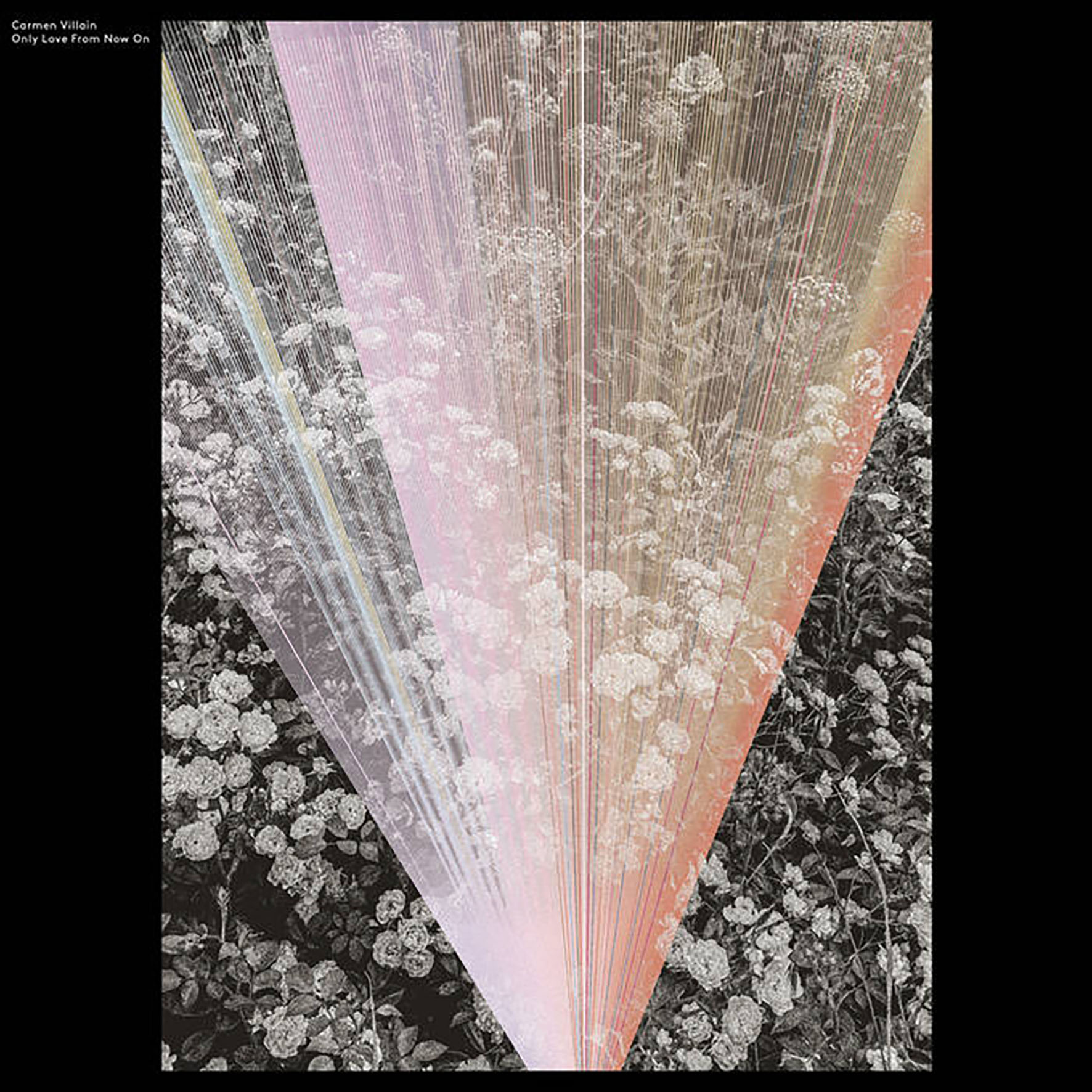



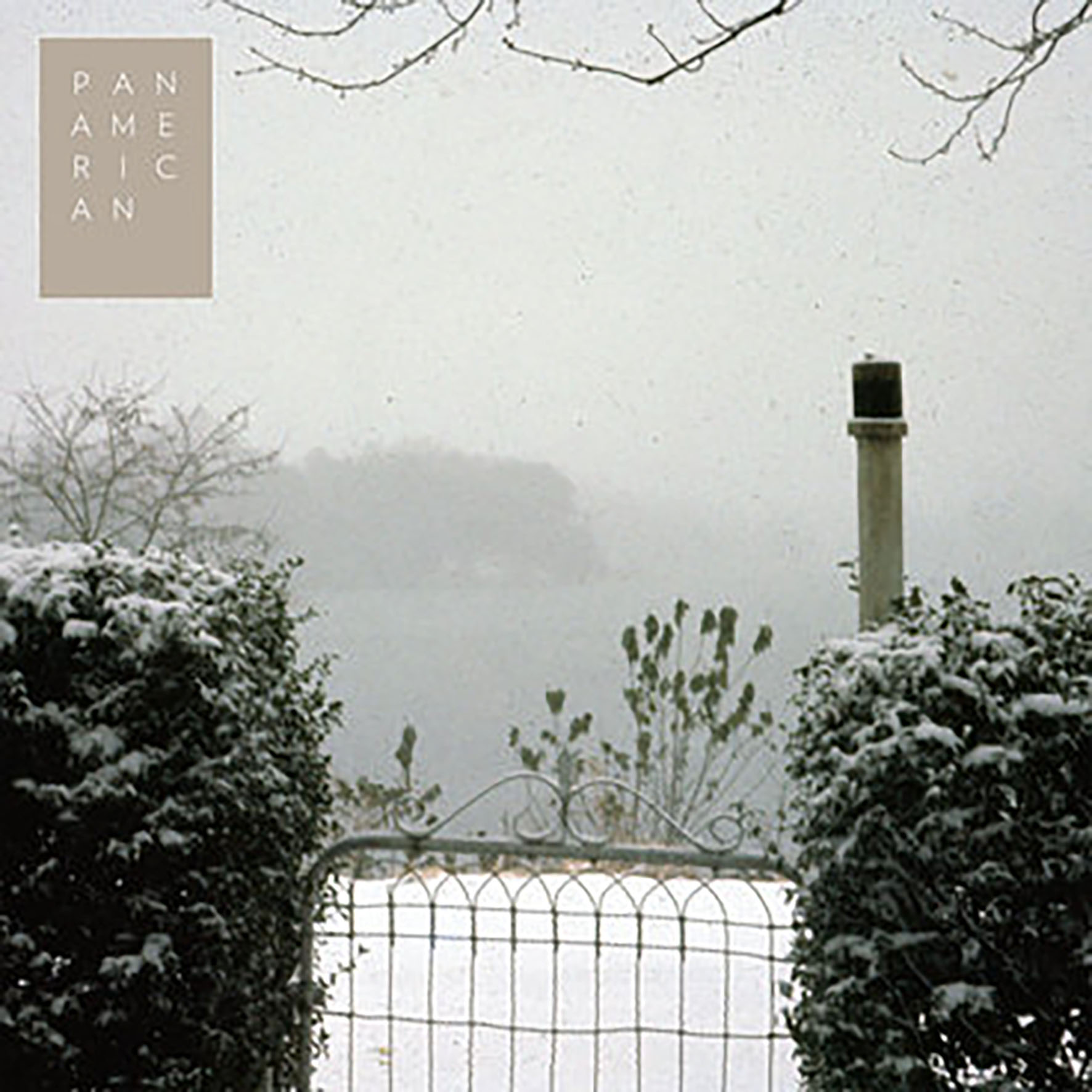 This latest full-length from Mark Nelson's long-running and unpredictably shapeshifting project is a collection of understated, near-ambient solo guitar instrumentals that Kranky describes as the culminating release of the composer's "romantic minimalism" side. It certainly is a languorously meditative and unrepentantly lowercase suite of songs, blurring the lines between an "ageless, scarred" Americana and dreamlike ambient drift. Significantly, the album was recorded during the first summer of the pandemic, as Nelson views these songs as a sort of "'lighthouse music,'" radiance cast from a stable vantage point, sending 'a signal to help others through rocks and dangerous currents.'" Given its gently minimal, near-ambient "lone guitar in the fog" aesthetic, The Patience Fader is likely to be something of a polarizing release: it falls dangerously close to calming Windham Hill-style prettiness a couple of times, but it can also feel incredibly poignant and sublime if one chooses to listen deeply enough. While it feels weird to describe music this quiet and slow-moving as "a bold move," it is exactly that. It would have been much easier for Nelson to revisit familiar, more fan-friendly territory than to attempt to convey something profound and ineffable while blearily hovering at the edge of perception like a ghost.
This latest full-length from Mark Nelson's long-running and unpredictably shapeshifting project is a collection of understated, near-ambient solo guitar instrumentals that Kranky describes as the culminating release of the composer's "romantic minimalism" side. It certainly is a languorously meditative and unrepentantly lowercase suite of songs, blurring the lines between an "ageless, scarred" Americana and dreamlike ambient drift. Significantly, the album was recorded during the first summer of the pandemic, as Nelson views these songs as a sort of "'lighthouse music,'" radiance cast from a stable vantage point, sending 'a signal to help others through rocks and dangerous currents.'" Given its gently minimal, near-ambient "lone guitar in the fog" aesthetic, The Patience Fader is likely to be something of a polarizing release: it falls dangerously close to calming Windham Hill-style prettiness a couple of times, but it can also feel incredibly poignant and sublime if one chooses to listen deeply enough. While it feels weird to describe music this quiet and slow-moving as "a bold move," it is exactly that. It would have been much easier for Nelson to revisit familiar, more fan-friendly territory than to attempt to convey something profound and ineffable while blearily hovering at the edge of perception like a ghost. It is not quite accurate to say that Saint Abdullah completely reinvent their sound with each new album, but is fair to say that Mehdi and Mohammad Mehrabani-Yeganeh are far more interested to exploring meaningful new territory than with building upon their past successes. While that is certainly an admirable trait, it can also be a frustrating one, as I know Saint Abdullah will probably never fully return to the more industrial-indebted aesthetic of their earlier albums (which I love). On the bright side, that also means that every new Saint Abdullah album has the potential to blindside me with a bold leap forward into previously uncharted creative territory. In that regard, Inshallahlaland falls a bit short of being a particularly revelatory album as a whole, yet it does explore some characteristically intriguing and thoughtful themes and features quite a fascinating longform piece ("Glamour Factory"). For me, the appeal of Inshallahlaland begins and ends there, but that one excellent 20-minute sound collage is enough to make the album a significant release that fans will not want to pass over.
It is not quite accurate to say that Saint Abdullah completely reinvent their sound with each new album, but is fair to say that Mehdi and Mohammad Mehrabani-Yeganeh are far more interested to exploring meaningful new territory than with building upon their past successes. While that is certainly an admirable trait, it can also be a frustrating one, as I know Saint Abdullah will probably never fully return to the more industrial-indebted aesthetic of their earlier albums (which I love). On the bright side, that also means that every new Saint Abdullah album has the potential to blindside me with a bold leap forward into previously uncharted creative territory. In that regard, Inshallahlaland falls a bit short of being a particularly revelatory album as a whole, yet it does explore some characteristically intriguing and thoughtful themes and features quite a fascinating longform piece ("Glamour Factory"). For me, the appeal of Inshallahlaland begins and ends there, but that one excellent 20-minute sound collage is enough to make the album a significant release that fans will not want to pass over.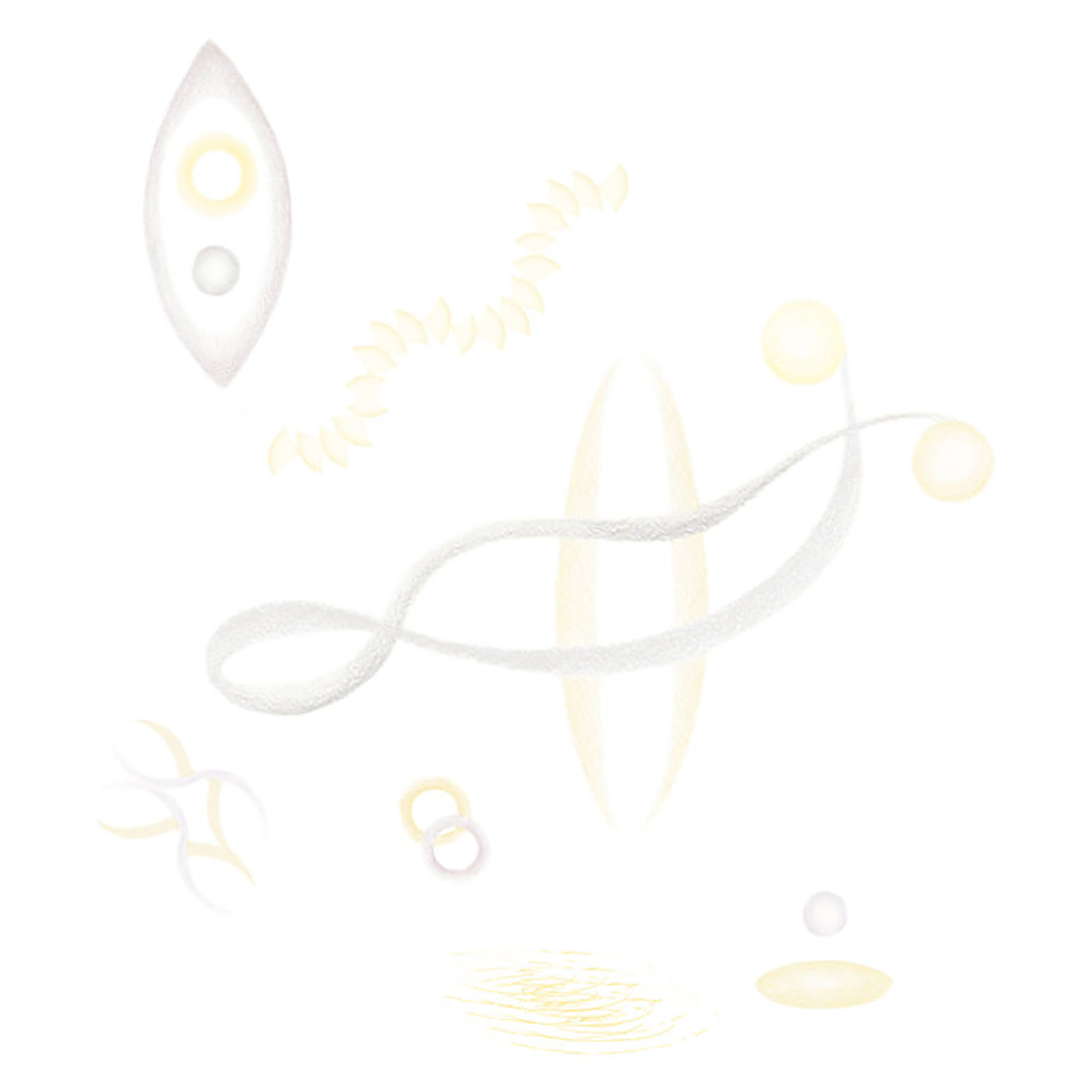 This Krakow-based composer's debut album was one of 2021's most pleasant late-year surprises, as Making Eye Contact With Solitude is a gorgeously warm and intimate gem of multilayered and masterfully textured psychedelia. Basta describes the album as a diaristic meditation on "domesticity, loneliness, repetitiveness, stubborn patterns of isolated minds and the sonic mysteries all around us" and cites the murderers' row of Cucina Povera, Félicia Atkinson, and claire rousay as key inspirations. While welcome shades of all three artists are certainly evident to some degree on these six songs, Basta's aesthetic already feels fully formed and distinctively her own. In fact, I suspect it will not be long at all before Basta regularly finds herself name-checked as an inspiration by other artists, as her unhurried and dreamlike phantasmagoria of rippling zithers, vividly textured field recordings, and enigmatic domestic sounds feels absolutely revelatory on the album's two strongest pieces.
This Krakow-based composer's debut album was one of 2021's most pleasant late-year surprises, as Making Eye Contact With Solitude is a gorgeously warm and intimate gem of multilayered and masterfully textured psychedelia. Basta describes the album as a diaristic meditation on "domesticity, loneliness, repetitiveness, stubborn patterns of isolated minds and the sonic mysteries all around us" and cites the murderers' row of Cucina Povera, Félicia Atkinson, and claire rousay as key inspirations. While welcome shades of all three artists are certainly evident to some degree on these six songs, Basta's aesthetic already feels fully formed and distinctively her own. In fact, I suspect it will not be long at all before Basta regularly finds herself name-checked as an inspiration by other artists, as her unhurried and dreamlike phantasmagoria of rippling zithers, vividly textured field recordings, and enigmatic domestic sounds feels absolutely revelatory on the album's two strongest pieces.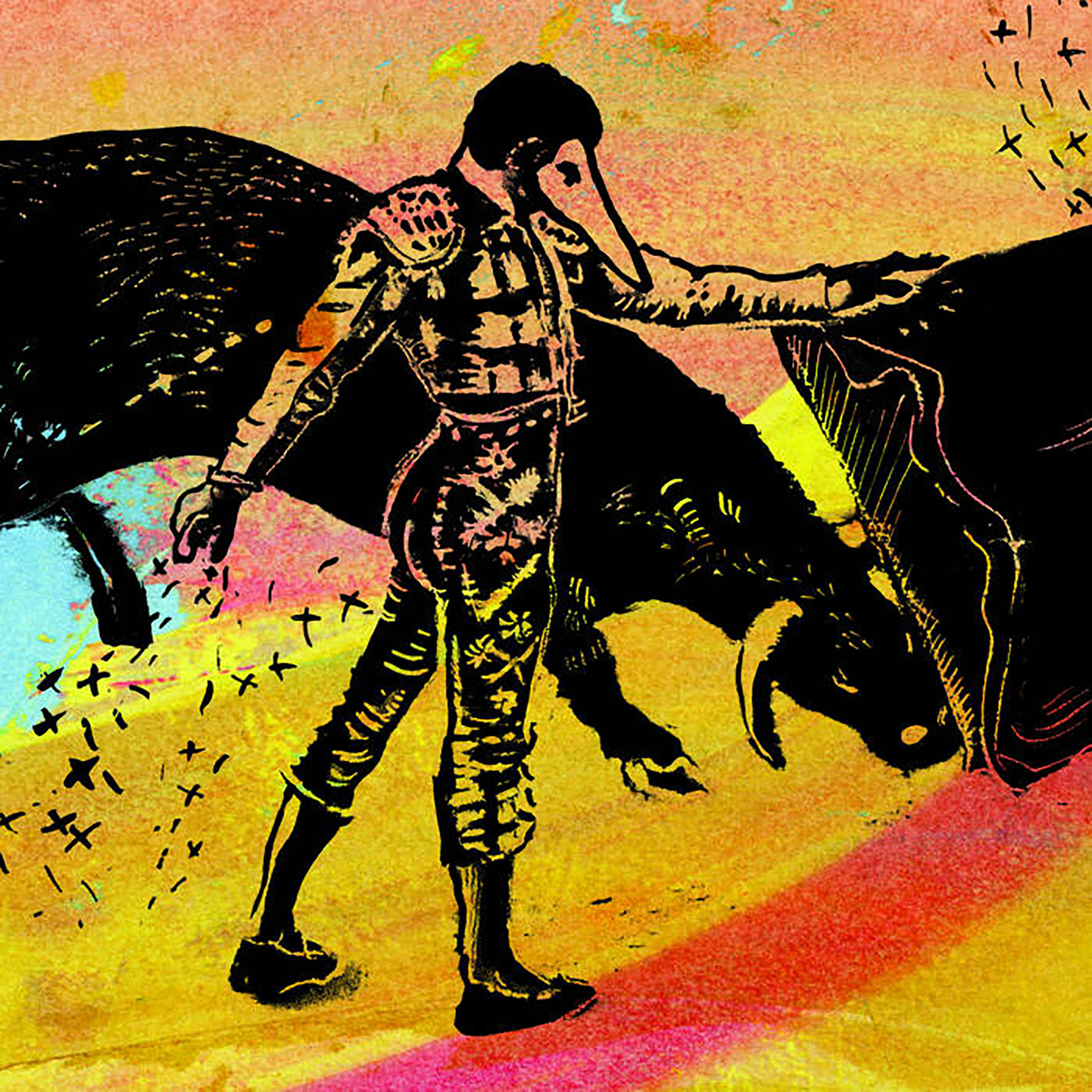 I was not expecting 2014's odds n' ends collection Fight for Your Dinner to ever have a sequel, so this latest batch of eclectic covers, one-off experiments, unusual collaborations, and orphaned songs came as a very pleasant New Year's Eve surprise last December. While the covers are a bit less leftfield this time around (no Missy Elliott), they compensate by being even better, as the duo's sublime interpretation of two '80s Prince classics is one of the best goddamn things that they have ever recorded. The album also features one hell of an excellent tribute to the late Jack Rose, reworkings of songs by Pixies and Amon Düül II, a homemade electronics experiment, and a six-year-old's bold vision for the perfect pop song. Given the album's freewheeling randomness and the focus upon previously unreleased pieces, one could be forgiven for thinking that Fight For Your Dinner II is strictly one for the band's most devout fans, but it is extremely rare for Big Blood to release anything that does not feature at least one absolutely essential song and this one has several (as well as some great cover art). Of course, I am admittedly speaking as one of the aforementioned "most devout fans," but I still believe it is an objective fact that there is an impressive amount of revelatory material here. And that anyone left cold by the "When Doves Cry/I Would Die For You" cover should be extremely concerned that their ears may be broken.
I was not expecting 2014's odds n' ends collection Fight for Your Dinner to ever have a sequel, so this latest batch of eclectic covers, one-off experiments, unusual collaborations, and orphaned songs came as a very pleasant New Year's Eve surprise last December. While the covers are a bit less leftfield this time around (no Missy Elliott), they compensate by being even better, as the duo's sublime interpretation of two '80s Prince classics is one of the best goddamn things that they have ever recorded. The album also features one hell of an excellent tribute to the late Jack Rose, reworkings of songs by Pixies and Amon Düül II, a homemade electronics experiment, and a six-year-old's bold vision for the perfect pop song. Given the album's freewheeling randomness and the focus upon previously unreleased pieces, one could be forgiven for thinking that Fight For Your Dinner II is strictly one for the band's most devout fans, but it is extremely rare for Big Blood to release anything that does not feature at least one absolutely essential song and this one has several (as well as some great cover art). Of course, I am admittedly speaking as one of the aforementioned "most devout fans," but I still believe it is an objective fact that there is an impressive amount of revelatory material here. And that anyone left cold by the "When Doves Cry/I Would Die For You" cover should be extremely concerned that their ears may be broken.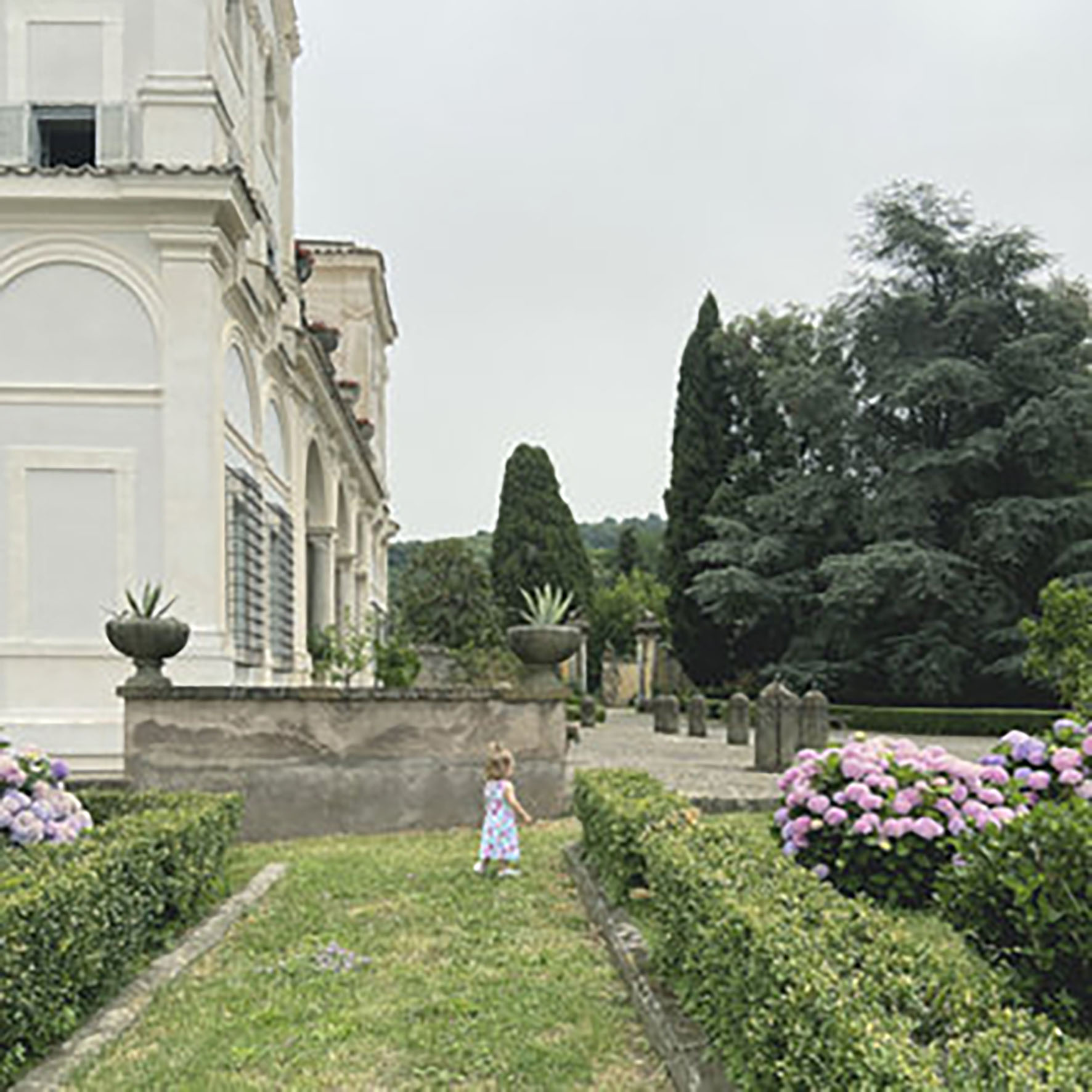 This latest release from Mogard is something of a modest one, as he describes it as "the result of experimentation with familiar and less familiar instruments available to me in the studio between 2019 and 2022." No further information is divulged about the album's "less familiar" elements aside from an interesting mention of reverb borrowed from the Inchindown oil tanks, which apparently hold the world record for longest reverberation time. If In a Few Places Along the River were a Lea Bertucci or Pauline Oliveros album, that expansive reverb would no doubt be a defining feature, but it seems like Mogard harnessed it in an more unusual and inventive way. The results are admittedly not quite top-tier Mogard (this is a digital-only release, after all), as this album captures him in stark, slow-burning drone mode rather than one of his more melodic and warm moods, but it is still solid enough to be satisfying, as the two bookends are impressively nuanced and substantial.
This latest release from Mogard is something of a modest one, as he describes it as "the result of experimentation with familiar and less familiar instruments available to me in the studio between 2019 and 2022." No further information is divulged about the album's "less familiar" elements aside from an interesting mention of reverb borrowed from the Inchindown oil tanks, which apparently hold the world record for longest reverberation time. If In a Few Places Along the River were a Lea Bertucci or Pauline Oliveros album, that expansive reverb would no doubt be a defining feature, but it seems like Mogard harnessed it in an more unusual and inventive way. The results are admittedly not quite top-tier Mogard (this is a digital-only release, after all), as this album captures him in stark, slow-burning drone mode rather than one of his more melodic and warm moods, but it is still solid enough to be satisfying, as the two bookends are impressively nuanced and substantial. Back in 2008, Steve Roden quietly released one of my favorite ambient albums of all time in a signed limited edition of 250. Of course, I did not realize it at the time, so it took another decade or so before Stars of Ice finally made its way to my ears. Happily, however, Room40 has now reissued Roden's hauntingly beautiful collage of obscure and antique Christmas records, which will hopefully nudge many more receptive ears towards this modest, one-of-a-kind masterpiece. While I am sure I would have greatly enjoyed the original album if I had heard it when it was first released, it is worth noting that my appreciation for texture has evolved considerably over the years, so maybe Stars of Ice uncannily got to me at precisely the right time. In fact, I wonder how significant a role Roden himself has (indirectly) played in my shifting tastes, as he has always been ahead of his time in regard to celebrating details and nuances (as well as inventively repurposing "non-musical" sounds) and we seem to be in the midst of a textural renaissance at the moment. That said, most of Stars of Ice is as nakedly beautiful as music can get, so the quavering murkiness, crackling and popping vinyl, and pleasantly lapping waves of hiss are mere icing on an already gorgeous cake. This is an absolutely brilliant and magical album.
Back in 2008, Steve Roden quietly released one of my favorite ambient albums of all time in a signed limited edition of 250. Of course, I did not realize it at the time, so it took another decade or so before Stars of Ice finally made its way to my ears. Happily, however, Room40 has now reissued Roden's hauntingly beautiful collage of obscure and antique Christmas records, which will hopefully nudge many more receptive ears towards this modest, one-of-a-kind masterpiece. While I am sure I would have greatly enjoyed the original album if I had heard it when it was first released, it is worth noting that my appreciation for texture has evolved considerably over the years, so maybe Stars of Ice uncannily got to me at precisely the right time. In fact, I wonder how significant a role Roden himself has (indirectly) played in my shifting tastes, as he has always been ahead of his time in regard to celebrating details and nuances (as well as inventively repurposing "non-musical" sounds) and we seem to be in the midst of a textural renaissance at the moment. That said, most of Stars of Ice is as nakedly beautiful as music can get, so the quavering murkiness, crackling and popping vinyl, and pleasantly lapping waves of hiss are mere icing on an already gorgeous cake. This is an absolutely brilliant and magical album. 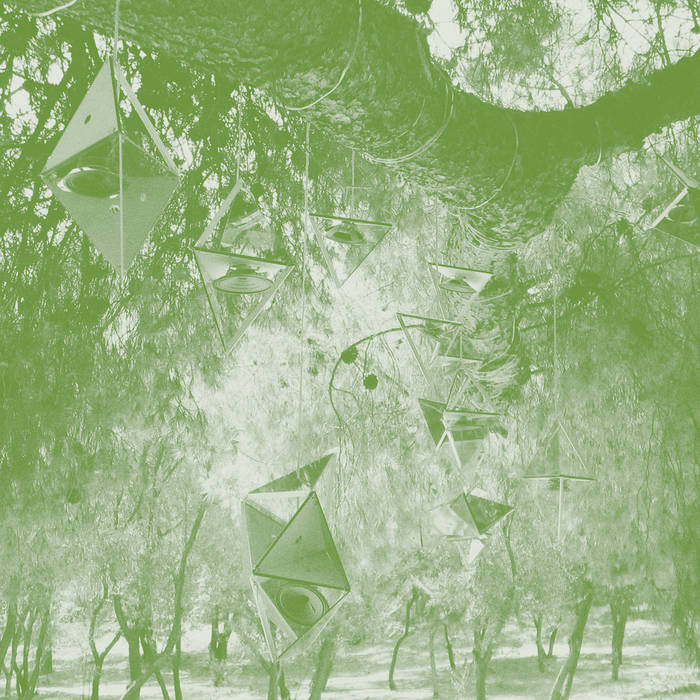 I am thrilled that Room40 is digging up and reissuing some woefully underheard gems from Steve Roden these days, as a hell of a lot of fascinating work passed me by in the pre-Bandcamp days of hyper-limited physical releases. Stars of Ice (due for a reissue in February) was especially revelatory for me, but this more modest initial dispatch from Roden's vaults is quite a treat as well. As far as I know, Oionos has not been released previously, yet it dates from a 2006 exhibition in Athens, Greece entitled The Grand Promenade. The premise of the exhibition was to create a "dialogue" between "contemporary site-specific works" and "various archaeological and historical sites in central Athens," but Roden fell in love with the Church of St. Dimitris Loumbardiardis (not among the planned sites) and managed to talk the curator into allowing an exception. Notably, the architect behind the church was the same man (Dimitris Pikionis) who designed the original promenade, so Roden's selection was a thoughtful and inspired decision, as he felt the path leading to the church provided a "stronger impression of Pikionis's vision" than the actual promenade (unlike the main promenade, the path to the church escaped being ‘restored’ in preparation for the 2004 Olympics).
I am thrilled that Room40 is digging up and reissuing some woefully underheard gems from Steve Roden these days, as a hell of a lot of fascinating work passed me by in the pre-Bandcamp days of hyper-limited physical releases. Stars of Ice (due for a reissue in February) was especially revelatory for me, but this more modest initial dispatch from Roden's vaults is quite a treat as well. As far as I know, Oionos has not been released previously, yet it dates from a 2006 exhibition in Athens, Greece entitled The Grand Promenade. The premise of the exhibition was to create a "dialogue" between "contemporary site-specific works" and "various archaeological and historical sites in central Athens," but Roden fell in love with the Church of St. Dimitris Loumbardiardis (not among the planned sites) and managed to talk the curator into allowing an exception. Notably, the architect behind the church was the same man (Dimitris Pikionis) who designed the original promenade, so Roden's selection was a thoughtful and inspired decision, as he felt the path leading to the church provided a "stronger impression of Pikionis's vision" than the actual promenade (unlike the main promenade, the path to the church escaped being ‘restored’ in preparation for the 2004 Olympics). There are a number of fascinating small labels exploring unusual niches these days, which I suppose makes the current era something of a golden age for curious outsiders with deeply arcane interests. My favorite imprint in that vein is unsurprisingly the "open-ended research project exploring the vernacular arcana of Great Britain and beyond" that is Folklore Tapes, as their major releases exist on a plane all their own, elegantly and entertainingly blurring the lines between art, history, folklore, scholarship, music, poetry, visual art and whatever other compelling threads catch their fancy. This latest opus is characteristically another glorious cultural artifact, which is hardly surprising given the fertile nature of the subject. Nevertheless, the label have still outdone themselves, as Swifter than the Moon's Sphere celebrates the hidden history of fairy folk with an eclectic array of fairy-inspired spoken word pieces and sound art, as well as a deep and endearingly witty scholarly dive into fairy class structure and how shifting views of the supernatural mirror our society. In fact, this is one of the rare albums in which the liner notes (courtesy of Jez Winship) are every bit as compelling as the actual music ("there is something oddly impotent about the fairy aristocracy"). Beyond that, Swifter than the Moon's Sphere is a welcome return to familiar territory for the label, bringing together an inspired host of known, unknown, obscure, and enigmatic artists for a freewheeling tour de force of supernaturally charged and backwards-looking folk horror and rural psychedelia.
There are a number of fascinating small labels exploring unusual niches these days, which I suppose makes the current era something of a golden age for curious outsiders with deeply arcane interests. My favorite imprint in that vein is unsurprisingly the "open-ended research project exploring the vernacular arcana of Great Britain and beyond" that is Folklore Tapes, as their major releases exist on a plane all their own, elegantly and entertainingly blurring the lines between art, history, folklore, scholarship, music, poetry, visual art and whatever other compelling threads catch their fancy. This latest opus is characteristically another glorious cultural artifact, which is hardly surprising given the fertile nature of the subject. Nevertheless, the label have still outdone themselves, as Swifter than the Moon's Sphere celebrates the hidden history of fairy folk with an eclectic array of fairy-inspired spoken word pieces and sound art, as well as a deep and endearingly witty scholarly dive into fairy class structure and how shifting views of the supernatural mirror our society. In fact, this is one of the rare albums in which the liner notes (courtesy of Jez Winship) are every bit as compelling as the actual music ("there is something oddly impotent about the fairy aristocracy"). Beyond that, Swifter than the Moon's Sphere is a welcome return to familiar territory for the label, bringing together an inspired host of known, unknown, obscure, and enigmatic artists for a freewheeling tour de force of supernaturally charged and backwards-looking folk horror and rural psychedelia.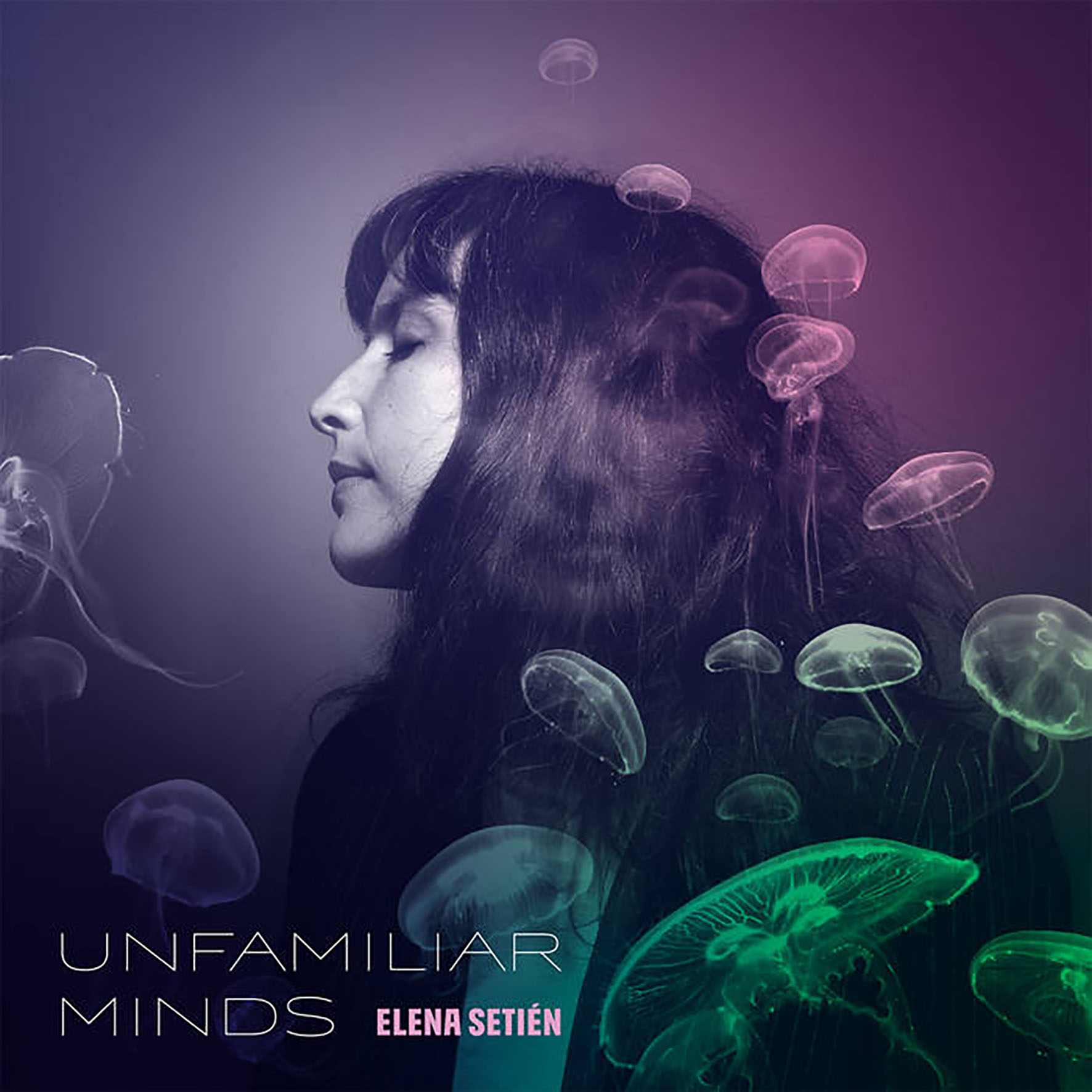 Basque composer Elena Setién’s second album for Thrill Jockey is quite an unexpected leap forward from the more pop-minded Another Kind Of Revolution. While Setién's love of strong melodies and big hooks still remains mostly intact, Unfamilar Minds beautifully balances them with a host of more adventurous and psych-inspired touches, resulting in at least a half of a strikingly brilliant and unique album. The other half admittedly does not suffer from a lack of likable melodies or tight songcraft, yet Setién's work definitely needs a splash of darker, stranger sounds to curdle the wholesomeness of her more straightforward "pop" tendencies. It is an improbable and unusual mingling of stylistic threads evoking a revolving cast of seductive female vocalists getting remixed by a gnarled heavy psych project, yet Setién somehow makes it feel totally organic, natural, and all her own. Also, her throaty purr makes that unholy collision feel way more sensual and soulful than I would have expected. While it would admittedly be nice if I enjoyed the album's second half as much as the more warped and hallucinatory first half, that first half nevertheless feels enough like a revelation to make Unfamiliar Minds feel like some kind of minor masterpiece.
Basque composer Elena Setién’s second album for Thrill Jockey is quite an unexpected leap forward from the more pop-minded Another Kind Of Revolution. While Setién's love of strong melodies and big hooks still remains mostly intact, Unfamilar Minds beautifully balances them with a host of more adventurous and psych-inspired touches, resulting in at least a half of a strikingly brilliant and unique album. The other half admittedly does not suffer from a lack of likable melodies or tight songcraft, yet Setién's work definitely needs a splash of darker, stranger sounds to curdle the wholesomeness of her more straightforward "pop" tendencies. It is an improbable and unusual mingling of stylistic threads evoking a revolving cast of seductive female vocalists getting remixed by a gnarled heavy psych project, yet Setién somehow makes it feel totally organic, natural, and all her own. Also, her throaty purr makes that unholy collision feel way more sensual and soulful than I would have expected. While it would admittedly be nice if I enjoyed the album's second half as much as the more warped and hallucinatory first half, that first half nevertheless feels enough like a revelation to make Unfamiliar Minds feel like some kind of minor masterpiece. Meitei’s plunderphonic exploration of “lost Japanese moods” has been an intriguing and unusual project right from the start, but it started to blossom into something truly great with 2019's Komachi and only got better with the beat-driven breakthrough of 2020's Kofū. As it turns out, that creative leap forward was also quite an intensely prolific period and a lot of tough cuts needed to made to distill the resultant mountain of songs into a single album. As I loved Kofū, I have no qualms at all with Meitei's ruthless culling choices for that album, but it did leave a lot of finished and semi-finished pieces on the cutting room floor (somewhere around 50, in fact) and many definitely deserved a far better fate. Meitei's original plan was to just keep moving forward with new material in the wake of Kofū's success, yet "when it came time to begin his next album, he found that it had been sitting in front of him all along" and "realized his work wasn’t over yet." In that regard, Meitei's judgment proves to be unerring once again, as this selection of Songs That Did Not Make The Original Cut is every bit as poignant, wonderful, and deliriously fun as its predecessor.
Meitei’s plunderphonic exploration of “lost Japanese moods” has been an intriguing and unusual project right from the start, but it started to blossom into something truly great with 2019's Komachi and only got better with the beat-driven breakthrough of 2020's Kofū. As it turns out, that creative leap forward was also quite an intensely prolific period and a lot of tough cuts needed to made to distill the resultant mountain of songs into a single album. As I loved Kofū, I have no qualms at all with Meitei's ruthless culling choices for that album, but it did leave a lot of finished and semi-finished pieces on the cutting room floor (somewhere around 50, in fact) and many definitely deserved a far better fate. Meitei's original plan was to just keep moving forward with new material in the wake of Kofū's success, yet "when it came time to begin his next album, he found that it had been sitting in front of him all along" and "realized his work wasn’t over yet." In that regard, Meitei's judgment proves to be unerring once again, as this selection of Songs That Did Not Make The Original Cut is every bit as poignant, wonderful, and deliriously fun as its predecessor. Discovering this London-based composer's adventurously psychedelic collages of traditional Greek music was one of 2021's great musical pleasures for me, so I was very eager to hear this ambitious double album follow up to Antiqua Graecia. As expected, it is a characteristically wonderful and unusual release, but it is also marks a detour away from Stamou's impressive run of Greek-themed albums. The theme of the aptly titled Monoliths is instead Stamou's attempt to "collide" the two sides of his working methods: live performances and studio work. By my estimation, it was a very successful collision, but it was mostly a behind-the-scenes one, as I would be hard pressed to determine where one approach starts and another begins. As a result, the more immediate and striking theme of the album for me as a listener is that each piece feels like an extended experiment in crafting an immersive, complexly layered sound world from just a single recognizable instrument. At least, that is how Monoliths unfolds for its first half, as the bottom drops out of the album's hallucinatory feast of bells, organs, and steel drums to reveal a considerably more processed, abstract, and psychotropic second hour of drone-damaged mindfuckery. That approach admittedly makes Monoliths a bit less accessible than some of Stamou’s more conventionally melodic work, but serious heads looking for a deep and sustained dive into otherworldly psych meditations will likely love this immersive tour de force.
Discovering this London-based composer's adventurously psychedelic collages of traditional Greek music was one of 2021's great musical pleasures for me, so I was very eager to hear this ambitious double album follow up to Antiqua Graecia. As expected, it is a characteristically wonderful and unusual release, but it is also marks a detour away from Stamou's impressive run of Greek-themed albums. The theme of the aptly titled Monoliths is instead Stamou's attempt to "collide" the two sides of his working methods: live performances and studio work. By my estimation, it was a very successful collision, but it was mostly a behind-the-scenes one, as I would be hard pressed to determine where one approach starts and another begins. As a result, the more immediate and striking theme of the album for me as a listener is that each piece feels like an extended experiment in crafting an immersive, complexly layered sound world from just a single recognizable instrument. At least, that is how Monoliths unfolds for its first half, as the bottom drops out of the album's hallucinatory feast of bells, organs, and steel drums to reveal a considerably more processed, abstract, and psychotropic second hour of drone-damaged mindfuckery. That approach admittedly makes Monoliths a bit less accessible than some of Stamou’s more conventionally melodic work, but serious heads looking for a deep and sustained dive into otherworldly psych meditations will likely love this immersive tour de force.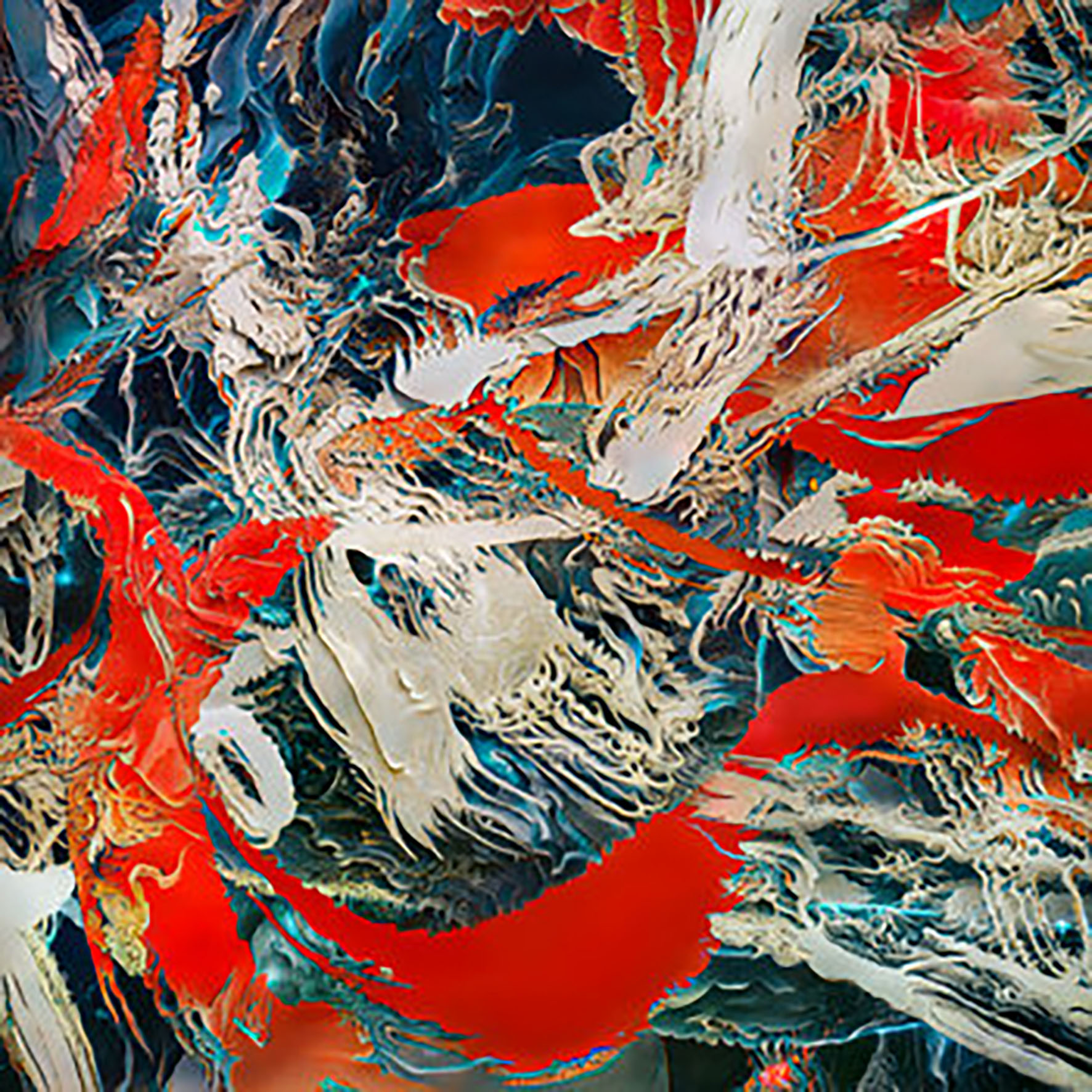 At this point, I consider myself quite well accustomed to Markus Popp's penchant for bold stylistic reinventions, yet this latest album managed to completely blindside me nevertheless. To be fair, however, Ovidono is not quite a pure Oval album, as Popp is joined by return collaborator Eriko Toyoda and artist/actress Vlatka Alec. The latter, in fact, is responsible for the album's concept: transforming the poetry of Ovid and Ono No Komachi into sound art that evokes "the tactile, immersive quality and intimacy of ASMR." The trio definitely succeeded in that regard, as Ovidono is probably the finest ASMR-inspired album that I have yet heard, but it is also a bit more ambitious than just a hallucinatory swirl of hushed and sibilant voices. Obviously, that would have been just fine by me too, as Popp is an absolute wizard at chopping and reassembling sounds. However, Ovidono is also quite compelling compositionally, as Alec and Toyoda's voices are backed by music that lies somewhere between noirish torch song, deconstructed piano jazz, and the uneasy dissonances of Morton Feldman.
At this point, I consider myself quite well accustomed to Markus Popp's penchant for bold stylistic reinventions, yet this latest album managed to completely blindside me nevertheless. To be fair, however, Ovidono is not quite a pure Oval album, as Popp is joined by return collaborator Eriko Toyoda and artist/actress Vlatka Alec. The latter, in fact, is responsible for the album's concept: transforming the poetry of Ovid and Ono No Komachi into sound art that evokes "the tactile, immersive quality and intimacy of ASMR." The trio definitely succeeded in that regard, as Ovidono is probably the finest ASMR-inspired album that I have yet heard, but it is also a bit more ambitious than just a hallucinatory swirl of hushed and sibilant voices. Obviously, that would have been just fine by me too, as Popp is an absolute wizard at chopping and reassembling sounds. However, Ovidono is also quite compelling compositionally, as Alec and Toyoda's voices are backed by music that lies somewhere between noirish torch song, deconstructed piano jazz, and the uneasy dissonances of Morton Feldman.
